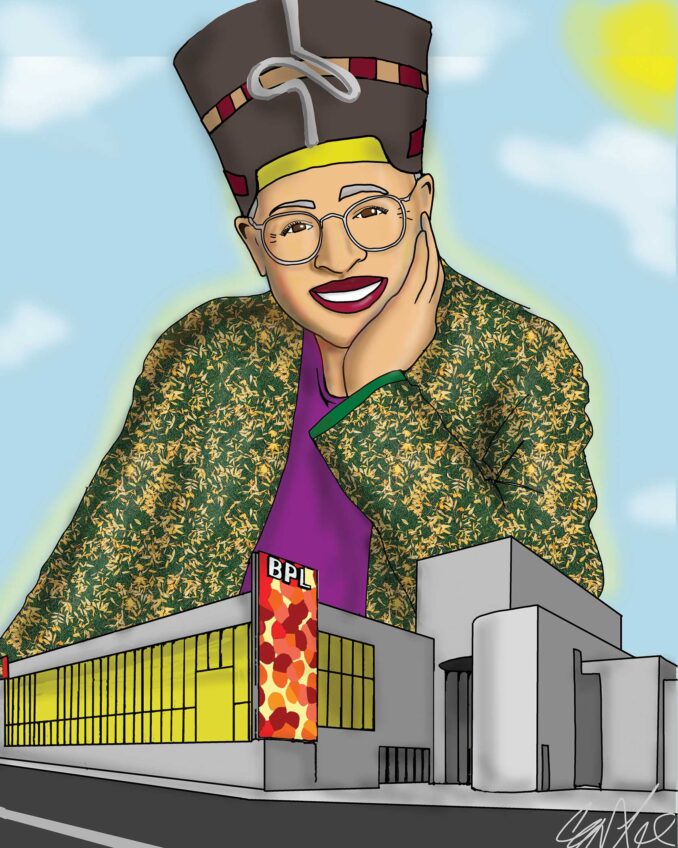How ‘The Help’ depicts race relations
So many viewers were not even born during the time depicted in “The Help”; hence, they have no idea what life was like in the Jim Crow-era South.
The median age of Americans is 37.2 years. The average-age American was born in 1974 and the average-age African American in 1980.
We may add to these sobering demographics the unfortunate reality that too many Americans gather their “facts” from television and the movies and not from books or other printed media.
Throw in the inability of most required U.S. History courses in high school to cover the 1950s and 1960s in significant detail and millions of our fellow citizens are “in the dark” regarding the civil rights struggles in Montgomery, Birmingham and Selma, Ala.
Their most likely connection to that period of our history is via black and white film clips of the Montgomery Bus Boycott, the 1963 March on Washington, the dogs, fires hoses and church bombing in Birmingham, the 1964 murder of three civil rights workers in Mississippi and on and on and on.
Now comes the movie, “The Help,” an artistic rendition of a white woman’s book on the lives of black maids employed by white families in Jackson, Miss. during the early 1960s. It has generated millions of dollars at the box office as well as considerable controversy.
As one who grew up in Phillips County on the Arkansas side of the Mississippi River Delta during the civil rights movement, I remind all that movies are artistic creations crafted as commercially viable products. Even movies based on “historical fact” are produced to make a profit and must also fit into tight time constraints.
Add the delicate nature of race relations in our country and almost ANY film about race in the 1960s is inherently controversial.
Given our national demographics, much of the disagreements on movies like “The Help” are between those who lived through those troubling times and those closer in age to the “average-age American” who did not.
What troubles me most about these generational arguments is the tendency of the younger generation to simplify what were very complex interactions between blacks and whites in the South of that era.
The opinions of the older generation are often dismissed and its advice unheeded, yet that generation moved our nation from a period of apartheid to where we are today. Even so, I forgive this youthful intolerance and am less concerned with what preceded these young people than with what awaits them! In Latin one might ask: Quo vadunt (Whither goest they?)?
Who will provide the wise counsel that only personal experience affords when men and women who lived through those times pass on? Is anybody recording their testimony?
I remind my younger fellow citizens that many, many Southern black maids, whose language skills and dialects were much like those of the maids in “The Help,” walked to work during the Montgomery Bus Boycott and, at great risk to their employment, marched on Washington in 1963 demanding “Jobs and Freedom.”
Could jobs be an issue in 2011? Would the critics of “The Help” march on Washington today and make demands of Congress as emotionally as they condemn the film?
The unemployment mountain today is no steeper than the Jim Crow mountain was for African Americans in the 1950s and 1960s. I might add that while there were wicked white racists like Birmingham’s Eugene “Bull” Connor and Dallas County, Alabama Sherriff Jim Clark in Selma, as well as those Dr. King described in his “Letter from a Birmingham Jail as “ … the white moderate, who is more devoted to ‘order’ than justice …,” but there were also upper-class Southern white supporters of Dr. King such as Clifford and Virginia Durr in Montgomery and in Georgia there was the anti-segregationist columnist for the Atlanta Constitution, Ralph McGill.
No one can argue that there wasn’t an oppressive political power imbalance, but not all whites were versions of Simon Legree (the cruel slave dealer in “Uncle Tom’s Cabin”) and not all blacks were the Rev. Dr. Martin Luther King Jr. or Rosa Parks.
In the black community we’ve had similar arguments before about “Roots” and “The Color Purple” that often ended in the following stalemate: The younger generation will not concede anything to the older because it “doesn’t” know what happened, and the older generation will not concede to the younger because it “does” know what happened.
Maybe the generations should break the stalemate.
David Evans lives in Cambridge, Mass.






